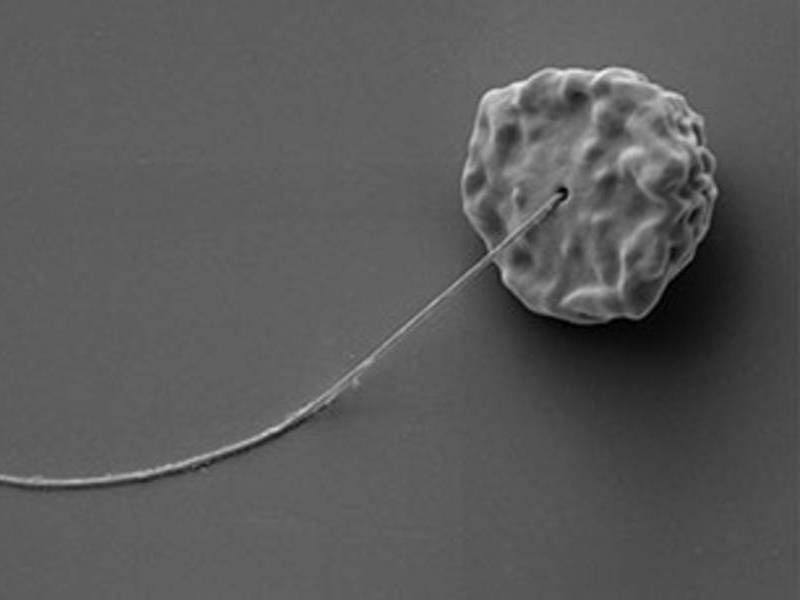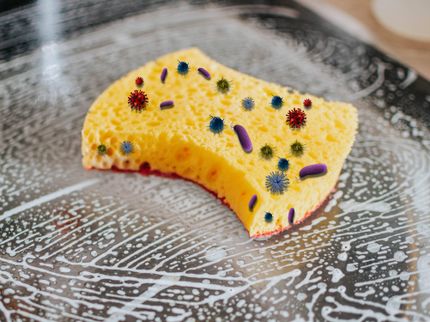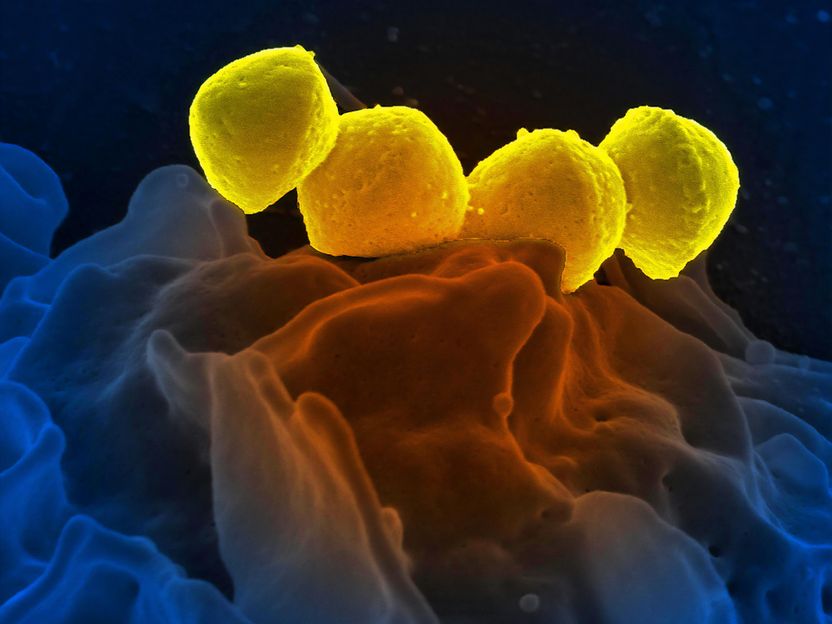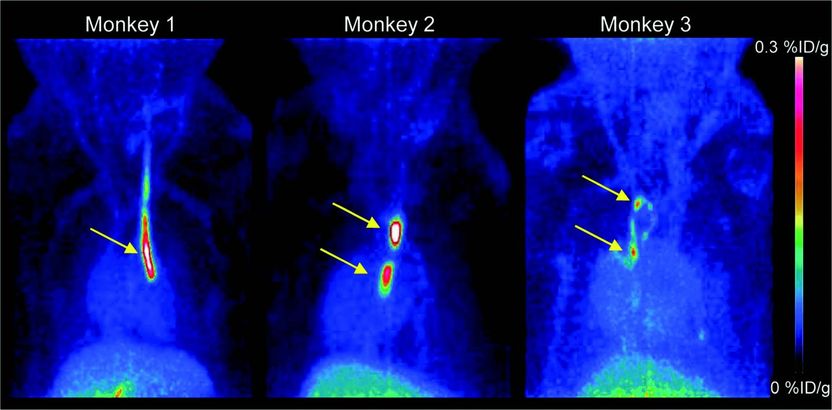Like a swimming donut
New way of locomotion discovered in single-celled organisms
A research team led by Dr. Sebastian Hess at the University of Cologne discovered that the unicellular microbe Idionectes vortex moves by means of a rotating flagellum. Special about this discovery is the fact that the flagellum bends into a ring and rotates about its internal axis – enabling Idionectes to swim with a motion similar to a smoke ring travelling through air. In case of the new microbe, the spinning motion of the flagellum produces a cycling film of water, which propels the organism forward.

Universität zu Köln
‘In addition to the previously unknown mode of locomotion, we have also found unusual structural details of the new species,’ says Dr. Sebastian Hess from the Institute of Zoology at the University of Cologne and lead author of the current study. ‘The base of the flagellum lacks visible anchoring fibres and, instead, sits in a structure resembling a bearing bushing, which might allow rotation in the first place.’ Rotating flagella, however, are a trait of prokaryotes, cells without a nucleus, not of the structurally much more complex eukaryotes such as Idionectes vortex. The new microbe thus represents a very interesting cell biological exception. In future, Sebastian Hess wants to find out more about the cellular details of Idionectes vortex to understand how this unique mode of locomotion evolved.
Original publication
Other news from the department science

Get the life science industry in your inbox
By submitting this form you agree that LUMITOS AG will send you the newsletter(s) selected above by email. Your data will not be passed on to third parties. Your data will be stored and processed in accordance with our data protection regulations. LUMITOS may contact you by email for the purpose of advertising or market and opinion surveys. You can revoke your consent at any time without giving reasons to LUMITOS AG, Ernst-Augustin-Str. 2, 12489 Berlin, Germany or by e-mail at revoke@lumitos.com with effect for the future. In addition, each email contains a link to unsubscribe from the corresponding newsletter.























































